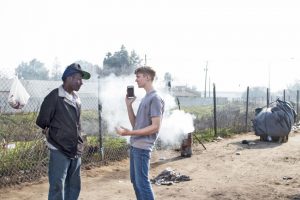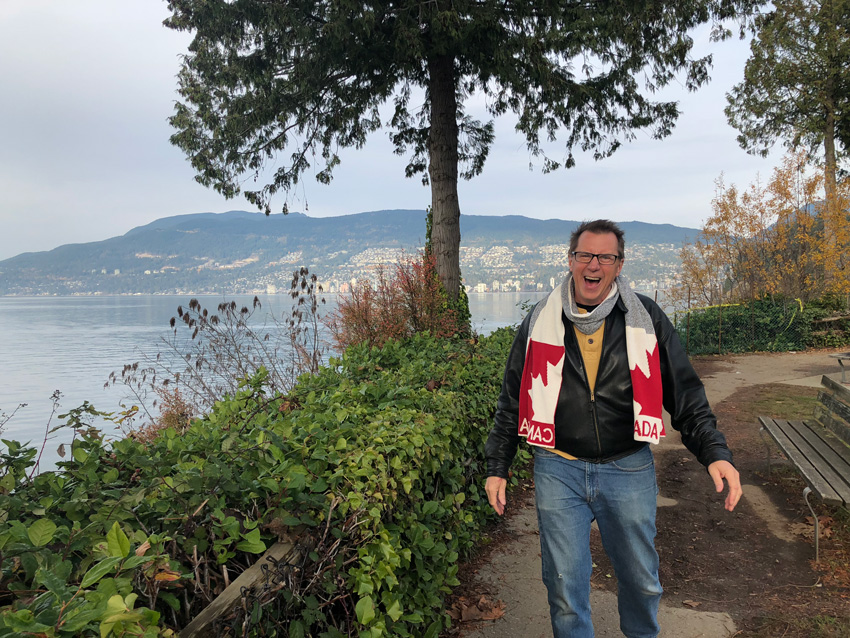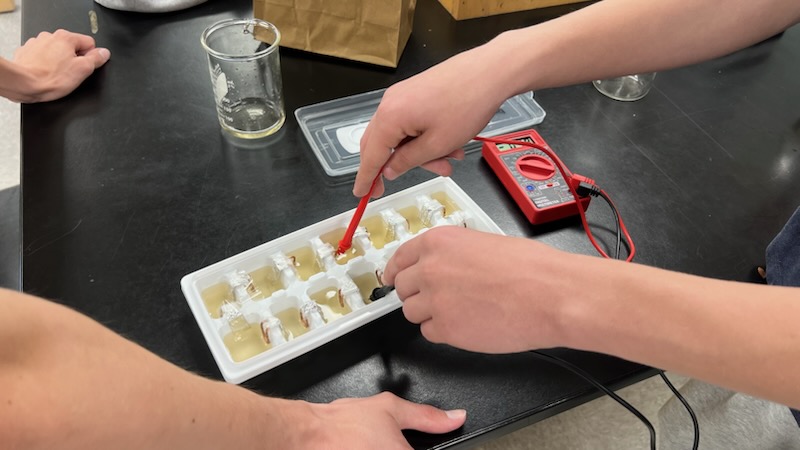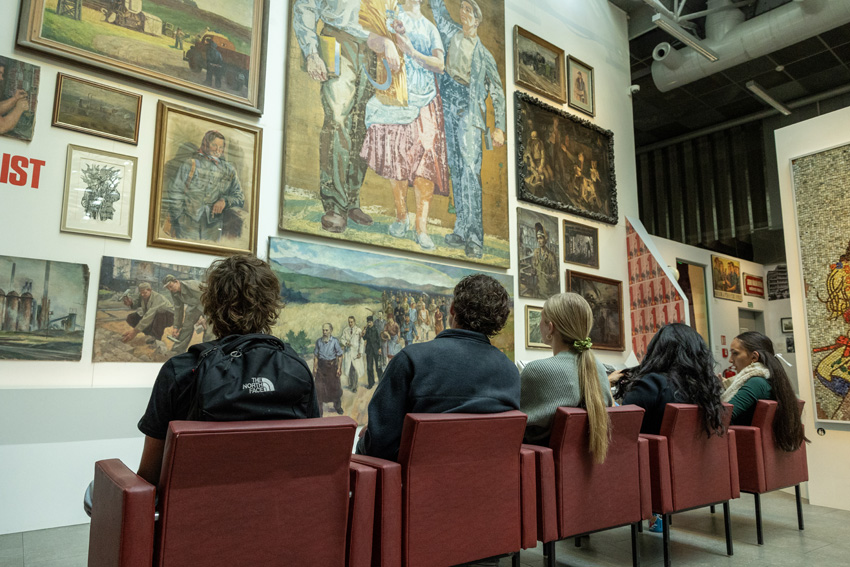Fresnans weigh in on city division

Approximately 100 people gathered in the Old Administration Building at Fresno City College to engage in a community conversation regarding the city of Fresno’s north-south divide, Oct. 20.
Moderated by former Fresno Bee Executive Editor Jim Boren and in partnership with Arizona State University’s News Co/Lab and Spaceship Media, the event aimed to discuss one of Fresno’s most pressing issues and attempt to discuss solutions.
The forum continued a city-wide dialogue led by the Fresno Bee about the Shaw Avenue dividing line that for decades has acted as the unofficial barrier between a prosperous north and a struggling south.
The event began with a panel discussing perceptions the two sides hold of each other. For those north of Shaw, there remains a general consensus that south Fresno is unsafe, impoverished and think “they’re just there.” South Fresnans generally view the north as socially isolated and think “they don’t care.”
Panelist and Fresno resident Felipe Arballo believes south Fresno recognizes the problem, but the north refuses to admit this is an issue. Living just north of Shaw, Arballo feels his living placement is strategic in connecting the two sides, but also believes city officials need to step up.
I feel that my responsibility as a Fresno resident who happens to live just north of Shaw is to bring the conversation back to my community and help bridge the gap. We have to introduce the south to the north, but it all starts with the elected officials. I can only do so much as a neighbor so it should be his or her job to reach across those boundary lines. That way, we have an opportunity to see how each other lives and see that we’re the same people. — Felipe Arballo, panelist
“I feel that my job and responsibility as a Fresno resident who happens to live just north of Shaw is to bring that conversation back to my community and really help bridge the gap,” Arballo said. “We have to introduce the south to the north, but it all starts with the elected officials. I can only do so much as a neighbor so it should be his or her job to reach across those boundary lines. That way, we have an opportunity to see how each other lives and see that we’re the same people.
“The biggest issue is education,” Arballo continued. “That was one of the reasons that led me north to Bullard High School instead of Fresno High School. If Fresno HS would have had the same reputation for a music program as Bullard did, I would have stayed. One of the biggest perceptions is the other school districts are not as good as Clovis Unified. This is one of the biggest roadblocks to the divide.”
Kamryn Schultz, ’19, interviews attendees of Fresno’s north-south divide forum in the following podcast.
Following the introductory panel, moderator Boren launched an exercise where each individual table discussed perceptions of the north vs. the south. At the end, one representative from each table shared with the rest of the assembly what the table shared.
After that, Fresnoland director Danielle Bergstrom discussed root causes and health effects of Fresno’s north-south divide through a powerpoint presentation.
One of the major effects of the divide are health issues. For example, the life expectancy is 20 years shorter in south Fresno than in the north. This is partially caused as doctors and dentist offices move north, following the flow of resources towards Herndon Ave. This increases difficulty for people living south of the line to gain access to health care.
Another health risk is the surge of chemical exposure specifically south of Shaw. The density of waste plants south of the line is significantly higher than in the north. Additionally, the comparable lack of green space in the south effects the quality of living. In the north, there is 4.62 acres per 1,000 residents while the south only holds 1.02 acres per 1,000 residents.
.@taniahlthplce is sharing health data that shows one in two babies in Southwest Fresno are at risk of dying before turning 1 year old. “Simply where one lives will impact how long they live” she says on north-south disparity in life expectancy pic.twitter.com/7ZFSRbC0NZ
— brianna vaccari (@brianna_vaccari) October 20, 2018
The current Ballot Measure P seeks to fix this issue by creating new parks and maintaining current parks. The flora not only is healthy for the environment, but also gives recreational opportunity for youth.
After living in different parts of Fresno for 35 years, Michelle Rogers, a kindergarten teacher at Aspen Elementary School, recognizes the problems of the split and how it affects others. She spent most of her life in north Fresno and notices many issues she wants to see resolved.
“Growing up in north Fresno I felt a lack of cultural diversity and a feeling of connection with my community,” Rogers said. “North Fresno loses a lot of community when they have separatist mindsets. One of the ways we can combat this growing divide is getting people into our communities and encouraging them to vote. I think that once voting policy change happens, people will start to wake up and care about each other. When we start seeing empathy, we will start seeing change.”
Timeline of key events relating to Fresno’s dividing line
- 1885 — Fresno founded
- 1918 — West of train tracks: foreign quarter. East side of train tracks: white.
- 1918 — First general plan
- 1937 — First sanitary landfill in USA built in southwest Fresno
- 1955 — Mayfair and Manchester center built, began flow of businesses north
- 1958 — Fresno State moves north
- 1973 — Saint Agnes Medical Center moves north
- 1974 — Annexation of parts of north Fresno into Clovis Unified School District
- 1988 — Clovis Community Hospital opens
- 1998 — Valley Children’s Hospital jumps the river into Madera
- 2014-17 — Strategic planning to move businesses back to downtown Fresno
- 2017 — Fulton Mall opens to traffic
Resident Lori Clanton moved to Fresno 25 years ago and realized after ten years here, she did not know the city. Clanton began walking four miles of a different neighborhood every Saturday and invites everyone to join her.
“I knew my little routes that I frequented,” Clanton said. “But if I wanted to really be a part of helping Fresno, then I wanted to see the whole city. Getting to know all of Fresno is a great way to be a part of the solution. But I have also found that getting to know all of Fresno has brought me such incredible joy and fulfillment. It has expanded my worldview. The city is 100 square miles, but it could be like you’ve traveled the world. So I’m inviting people to get out of their routines, come see all of Fresno and gain a greater sense of familiarity and connectedness.”
Sam Cross, ’19, speaks to Rodney Murphy, south Fresno resident in the following podcast.
Reedley resident Kathy Omachi volunteers in Fresno’s southwest chinatown. She feels a “neutron bomb” went off in the area as many of the former businesses and utilities left the area.
“The main issue I see in Fresno is accessible housing,” Omachi said. “When you build a certain quality of housing in a particular area, you attract some people. It needs to be spread out through the entire area, so that we generate a larger community where people can choose their housing.”
Omachi recalls Fresno’s chinatown area as being a place. With the recent construction of the high speed rail, she views physical barriers dividing the city.
“Shaw (ave) is still a very big dividing line,” Omachi said. “For chinatown, which is where I’ve volunteered for last 20 plus years, we are cut off by the freeway and also by the railroad tracks. We’ve just been an isolated community, but we were actually from about the mid 1800s we were actually the core of Fresno when it developed. One of the things that we do need is cross communication. People need to expand their experiences and their children’s experiences with seeing all parts of Fresno. That’s what makes up our character and our soul.”

In high schools across Fresno, students may develop stereotypes when discussing cultures of different campuses. Many of the same issues Fresnans face can seep into the educational institutions of the city.
In working towards a more united Fresno, like adults, high school students need to disregard stereotypes and the district divisions and be willing to engage with peers regardless of geographic location.
As citizens on both sides of the line, the true value of the individual to starts when people bridge cultural or city divides. Rather than looking through the scope of monetary value, experiment looking at the individual person and the community before forming misconceived biases.
For more information on important issues in the San Joaquin Valley, contact Fresnoland and director Danielle Bergstrom via their website and sign up for a newsletter.
For more articles, check out Space archaeology: discovering and reshaping history and Warnors Theatre’s 90th anniversary celebrates Fresno history. Additionally, read Fulton District undergoes renovations, restorations to historic area and Fulton District is open for business.
For more on Fresno community issues, read Sam Cross’s article, Fresno residents reflect on homeless crisis, pt. 1.
For more on the Bee’s coverage of the forum, read The Bee’s forum on Fresno’s divide got people talking. What’s next? by Brianna Calix.
For more information or how to become involved in the conversation, contact Fresno Bee reporter, Brianna Calix.
Kamryn Schultz and Sam Cross also contributed to this article.





Connor Jens • Oct 29, 2018 at 9:08 am
Great article Alex!
Carston Saelzler • Oct 26, 2018 at 7:04 pm
Interesting article Alex. Good information about a concern of our city.